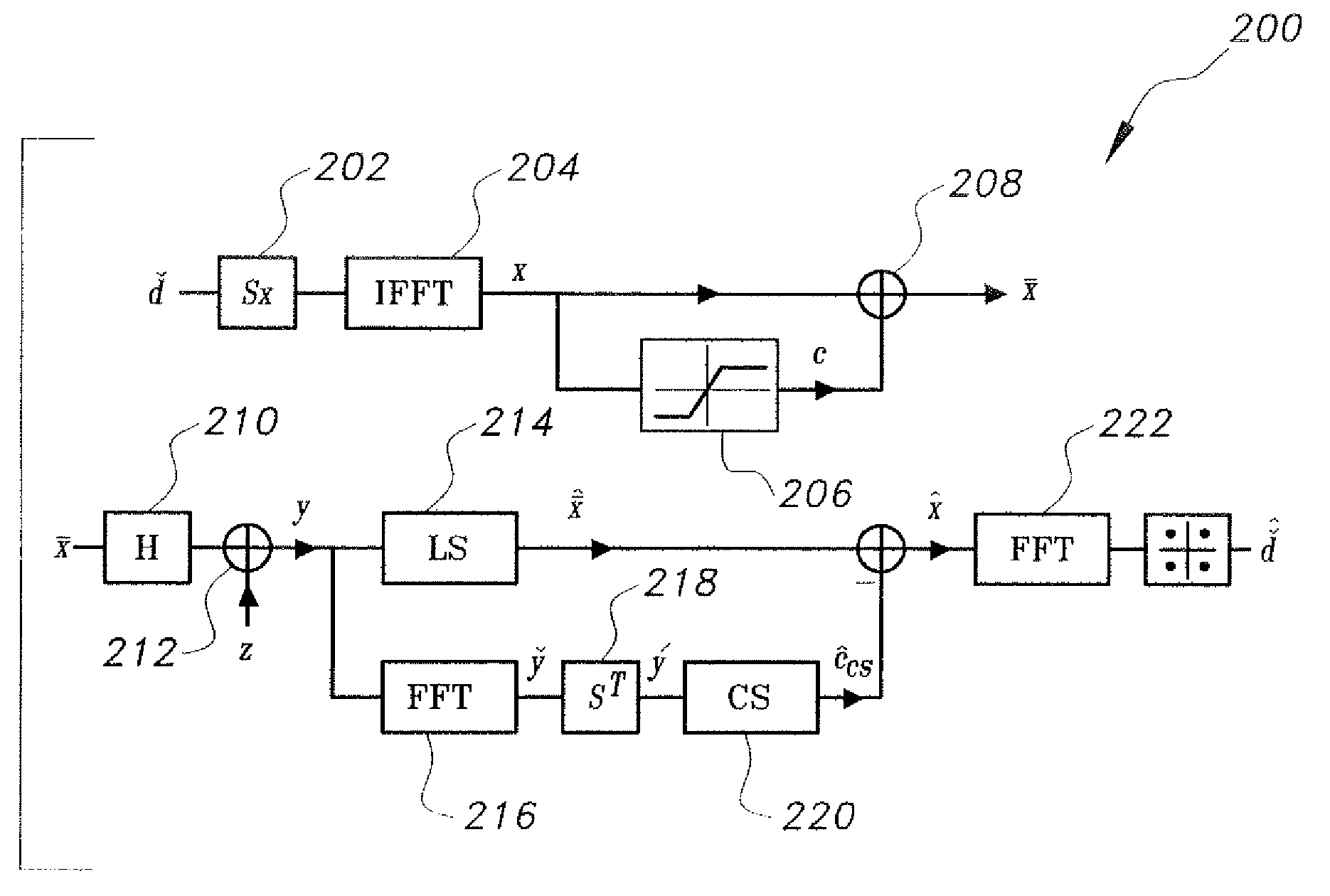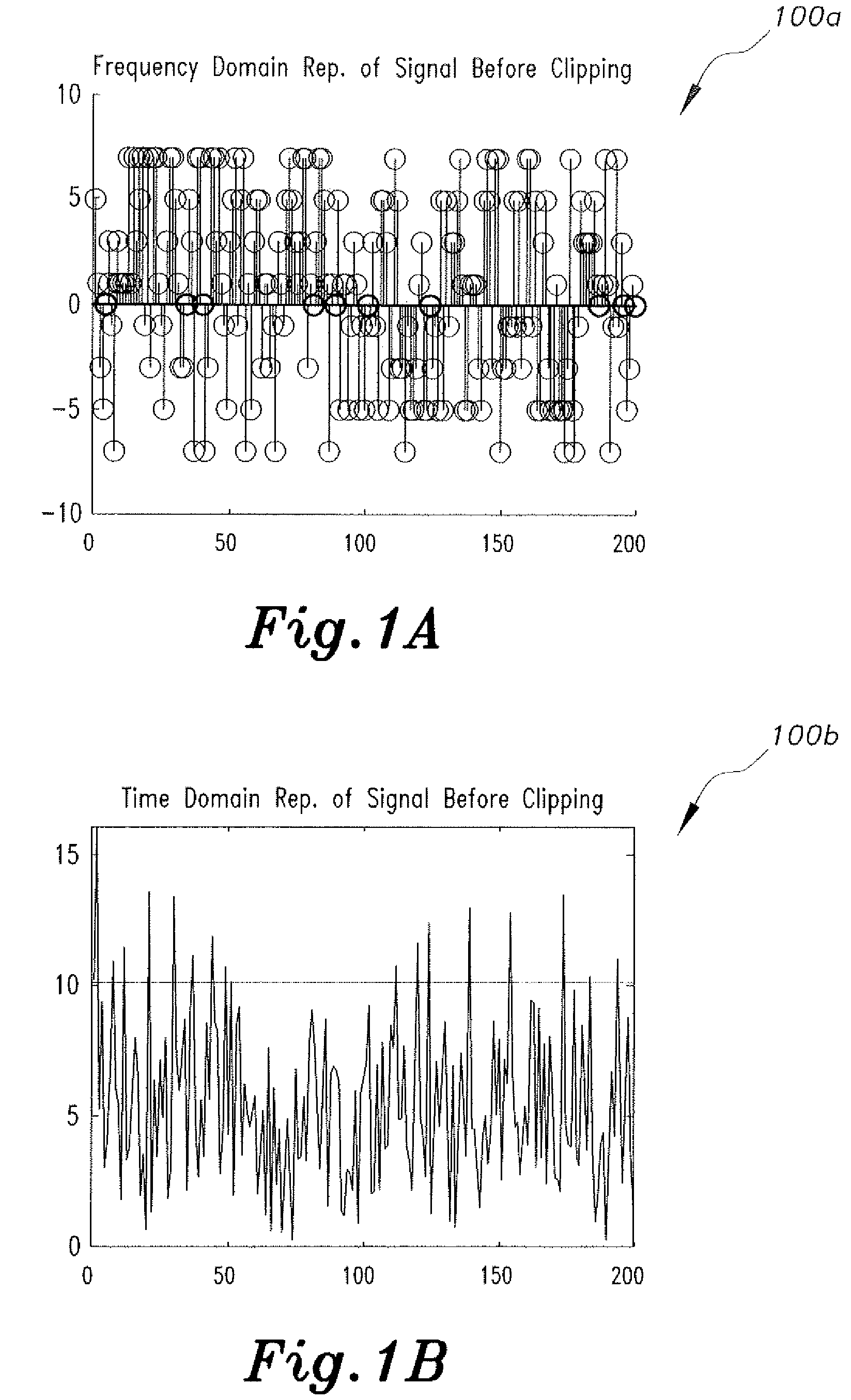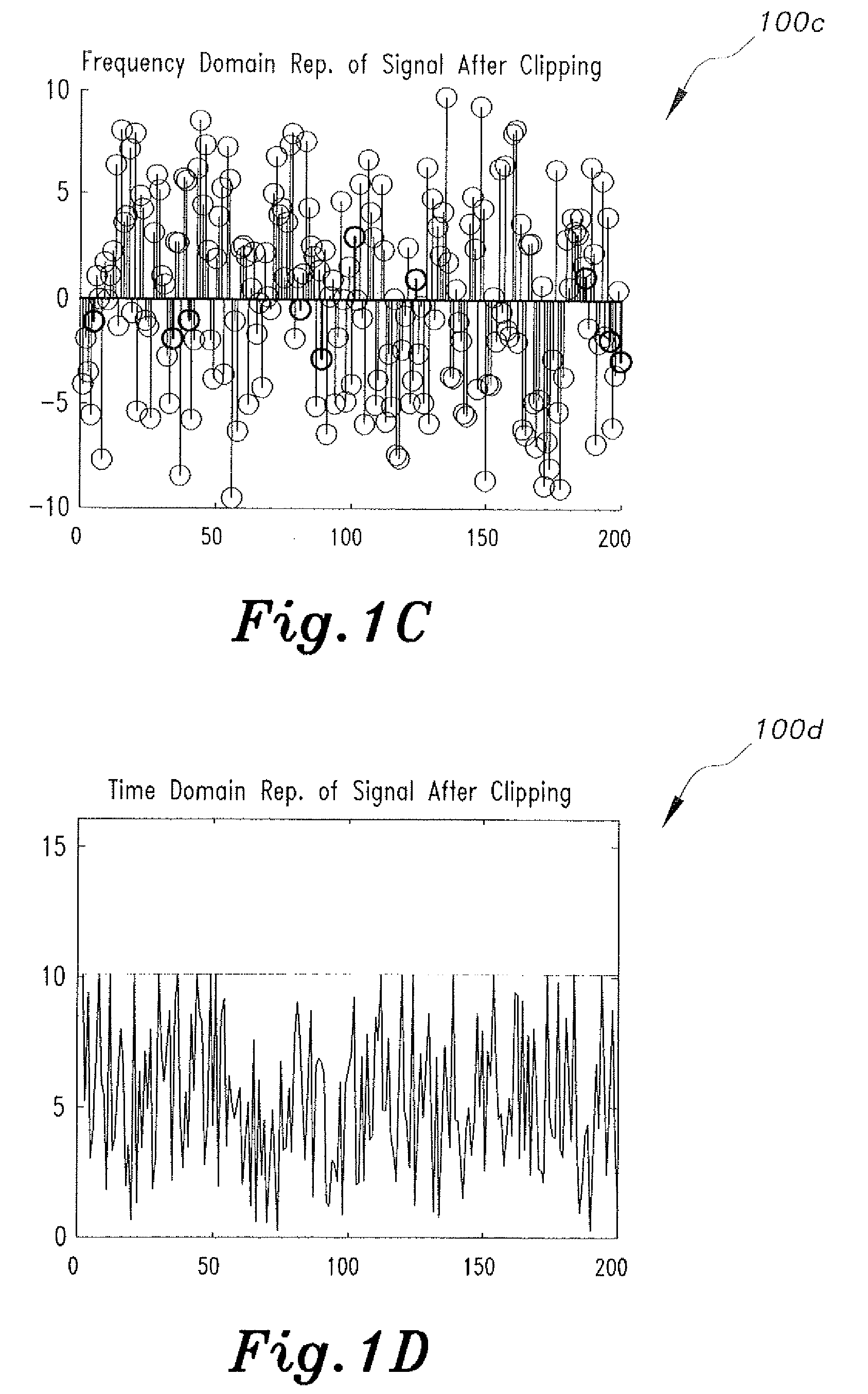Method of performing peak reduction and clipping mitigation
a peak reduction and clipping mitigation technology, applied in the field of digital communication techniques, can solve the problems of increasing the penalty of symbol error rate (ser), increasing the papr, etc., and achieve the effect of reducing the papr, reducing the complexity of papr reduction techniques, and simple peak reduction signals
- Summary
- Abstract
- Description
- Claims
- Application Information
AI Technical Summary
Benefits of technology
Problems solved by technology
Method used
Image
Examples
Embodiment Construction
[0031]The method of performing peak reduction and clipping mitigation has a time-domain complex base-band equivalent channel model given by the relation:
[0032]y(k)=∑ℓ=0L-1h(ℓ)x(k-ℓ)+z(k)(1)
where {x(k)} and {y(k)} denote the channel scalar input and output, respectively; h=(h0, h1, . . . , hL-1) is the impulse response of the channel; and z(k)˜CN(0,σz2) is AWGN. To compactly notate OFDM, the present method expresses the above channel model (1) in the following matrix form:
y=Hx+z (2)
where y and x are the time-domain OFDM receive and transmit signal blocks (after cyclic prefix removal) and z˜CN(0,σz2I).
[0033]Due to the presence of the cyclic prefix, H is a circulant matrix describing the cyclic convolution of the channel impulse response with the block x and can be decomposed as H=FH DH, where the superscript H denotes the Hermitian conjugate, F denotes a unitary Discrete Fourier Transform (DFT) with (k,l) element:
[0034][F]k,ℓ=1Nⅇ-j2πkℓN,k,ℓ∈0,1,…,N-1,
D=diag({hacek over (h...
PUM
 Login to View More
Login to View More Abstract
Description
Claims
Application Information
 Login to View More
Login to View More - R&D
- Intellectual Property
- Life Sciences
- Materials
- Tech Scout
- Unparalleled Data Quality
- Higher Quality Content
- 60% Fewer Hallucinations
Browse by: Latest US Patents, China's latest patents, Technical Efficacy Thesaurus, Application Domain, Technology Topic, Popular Technical Reports.
© 2025 PatSnap. All rights reserved.Legal|Privacy policy|Modern Slavery Act Transparency Statement|Sitemap|About US| Contact US: help@patsnap.com



